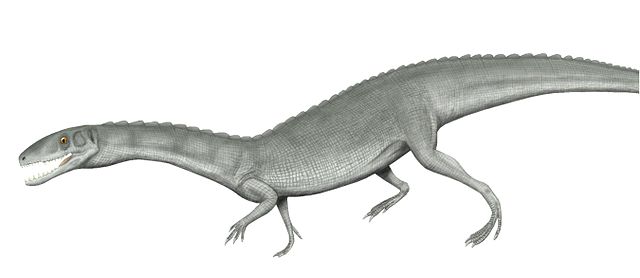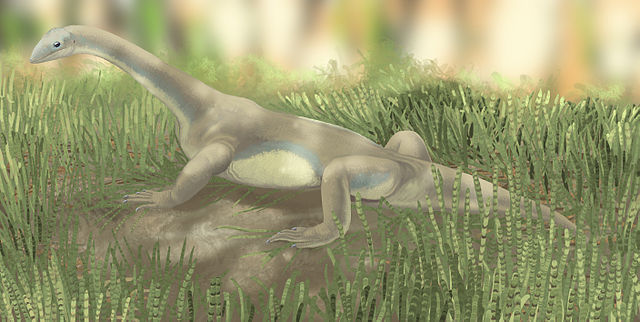Yarasuchus is an extinct genus of avemetatarsalian archosaur that lived during the Anisian stage of the Middle Triassic of India. The genus was named and described in 2005 from a collection of disarticulated but fairly complete fossil material found from the Middle Triassic Yerrapalli Formation. The material is thought to be from two individuals, possibly three, with one being much more complete and articulated than the other. The type and only species is Y. deccanensis. Yarasuchus was a quadruped roughly 2–2.5 metres (6.6–8.2 ft) long, with an elongated neck and tall spines on its vertebrae. Unlike other quadrupedal Triassic reptiles, the limbs and shoulders of Yarasuchus were slender, and more like those of ornithodirans.
Outdated life restoration depicting Yarasuchus as a "raisuchian" with osteoderms.
Restoration of the contemporary allokotosaur Pamelaria.
Restoration of the contemporary dicynodont Wadiasaurus.
The Yerrapalli Formation is a Triassic rock formation consisting primarily of mudstones that outcrops in the Pranhita–Godavari Basin in southeastern India. The Yerrapalli Formation preserves fossils of freshwater and terrestrial vertebrates as well as trace fossils of invertebrates. The tetrapod fauna includes temnospondyl amphibians, archosauromorph reptiles, and dicynodonts.
Image: Wadiasaurus 1DB
Image: Pamelaria dolichotrachela



